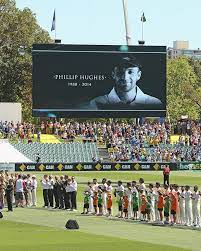
Cricket has been a constantly developing sport. Like every sport, cricket has its own set of rules and regulations. However, after a particular interval of time, there arises a need to change these rules. Today, in this article we will discuss five such incidents which took place in the history of world cricket, which gathered enough criticism for the ICC to rewrite and revoke the particular rules for the betterment of the game.
The first rule that we are gonna discuss about are two fielders behind square on the leg side. The 1932/33 Ashes series, which was played in Australia, was famous for Douglas Jardine-led England’s controversial bodyline bowling tactics. Bowlers used to stick to bowling short body line bouncers and the only way batsman had to negotiate it was ducking or playing, most of which would take a top edge and land into the hands of the fielder behind square on the leg side.
When people and cricket pundits started criticising it, at first, the MCC passed a law to remark these bowling tactics as unfair. During that period, the umpires had the duty to identify those bowling tactics and immediately order to stop those. Later, the rules have allowed only two fielders behind square on the leg-side, and the bodyline bowling tactics are now almost impossible due to this rule.
The second rule that we are gonna discuss about is the No Ball against underarm bowling. During the last moment of the third final of the 1980/81 Benson & Hedges World Series Cup between Australia and New Zealand at Melbourne, the host Australian team, more specifically Chappell brothers, stunned the cricket world when skipper Greg instructed Trevor to bowl an underarm ball as the last ball of the last over owing to which New Zealand lost the match by six runs.
This infuriated cricketing fans around the globe and the Chappel brothers as well as the underarm rule received a lot of flak. Post this incident, ICC banned the use of underarm deliveries and currently the use of an underarm delivery will be penalised in the form of a no ball for the bowling team and a free hit for the batting side.
The third rule that we are gonna discuss about are the fielding restrictions. In the final over of that rain-curtailed Benson & Hedges World Cup match, West Indies required ten runs to win. While the English legend, Sir Ian Botham was bowling the last over, the Caribbean side added seven runs in the first five deliveries of that over and needed three runs off the last ball to win the match.
The English Captain, at this crucial conjecture decided to send all his fielders including the keeper on the boundary line since there was no fielding rule at place at that time and as a result, the Windies lost the game by 2 runs. Finally, the fielding restrictions were introduced in the limited-overs cricket which was applied for the first time in 1980/81 Australian summer and since then we have experienced many changes in the rules of fielding restrictions in limited-overs cricket.
The fourth rule we are gonna discuss about is the Super Over tied rule. The final of the ICC Cricket World Cup 2019 between England and New Zealand was thrilling but ended with some huge controversies, including the rules of the Super Over. The main game had a tie result as both teams scored 241 runs in 50 overs. To everyone’s shock, even the super over ended in a tie but England were crowned as the world champions owing to an ICC rule which stated that incase of a draw in the super over , the team who hit the more number of boundaries during the match will be declared as the winner.
The rule was severely criticised by cricketing fans round the globe and ICC was forced to change the rule which stated that if the match remained as tie after the first Super Over, the game will follow another Super Over until getting a result. In group stage matches, the game will be counted as a tie if the game remained tie after the first Super Over.
The last rule which we are gonna discuss about is the Duckworth Lewis method. In the semi final of the 1992 CWC, South Africa were on the brink of a historic victory when they required 23 runs in 13 balls with four wickets in hand when rain struck the match. Later, when that game restarted, South Africa got the target of 21 runs on one ball leaving cricket fans and the Proteas players on field in a state of utter shock and despair.
Many cricketing fans, commentators and pundits were not happy with that revised target incident which forced the ICC to introduce the D/L method. According to the ICC, the D/L method or presently known as DLS method “is a formula to fairly calculate the winning side when inclement weather intervenes, and the match is interrupted, which includes re-calculating totals when time is lost in the match.”




